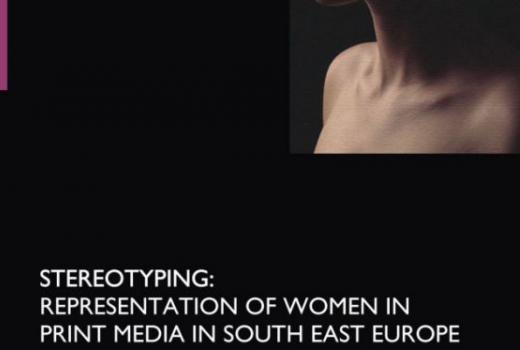Stereotyping: Representation of women in print media in SEE

Stereotyping: Representation of women in print media in SEE
Nirman Moranjak-Bamburać, Tarik Jusić, Adla Isanović (ur.)
Publisher:
Mediacentar Sarajevo
2007
As part of the project "Gender Stereotypes in Media: Representation of Women in Print Media in South East Europe", Mediacentar Sarajevo conducted comprehensive research, focusing on the stereotyping of gender roles, the ways in which media portray women, and methods and strategies of discrimination.
The region of South East Europe is undergoing such rapid, broad change at present we can barely cope. This transformation has overwhelmed our economies, politics, governments, legal and educational systems, social norms, roles, relations and identities. The media have hardly been excluded from these processes. We are currently witnessing the rapid transformation of media within our "transitional societies," characterized by increasing commercialization and fierce competition for market shares between media outlets. The situation is further complicated by the steady influx of new media technologies reshaping the very nature of public communication at the beginning of the 21st century.
Nevertheless, it seems that some cultural norms and social practices continue to resist this all-encompassing transformation, among these the representation of gender in the mass media. It seems that media still strongly mirror, represent and ultimately reify stereotypical gender roles and identities defined by conservative patriarchal ideology. The image of our societies that the media convey suggests that politics or any other 'serious' public engagement remains reserved for men, while women are assigned roles in the private sphere and entertainment. The public sphere, as portrayed by these media, still remains the domain of men.
Keeping in mind the specific situations in which Albania, Bosnia and Herzegovina, Bulgaria, Croatia, Macedonia and Serbia now find themselves, we believe it is important to offer insight into the ways in which print media in these countries portray gender roles and relations, and thus support or resist the overall social changes that are under way. Such representational practices attest to much deeper struggles and contradictions these societies face along their path towards "European integration," liberalization and democratization, and so deserve to be identified and studied.
This book is an attempt to enhance understanding of these processes redefining our core social values, structures and identities by focusing on print media's representational practices. We have tried to offer an overview of the tactics and strategies of gender representation in the print media of six Southeast European countries. In doing so, we invited authors of diverse methodological and theoretical traditions and backgrounds and asked them to combine both qualitative and quantitative approaches, with the aim of offering a broad variety of perspectives on this complex subject.
"The task of this collection of papers in this sense is to try and help in understanding, explaining, and also changing the hegemonic hierarchy of gender regimes and creating a foundation for changes in media programs and business policy. But this will require the readiness of the media themselves to reexamine their roles.
The diagnosis made for the media images of gender roles and the attribution of responsibility to media for the contrived processes of democratization in society are at the same time a public appeal for us to imagine a different democratic structure of public communication- for all of us together to imagine the potential of an emancipated media. The development of widespread, genuine media literacy might contribute to the evolution from a commercially-driven media to one with an ideal above all to uphold human rights." (Nirman Moranjak-Bamburać)
The project is a joint endevour of the South East European Network for Professionalization of Media (SEENPM) and Balkan Human Rights Network (BHRN), financed by SEENPM, Open Society Foundation BiH (FODBIH) and The Danish Ministry of Foreign Affairs Neighbourhood Programme (NAB).
Project partners: Albanian Media Institute (Tirana,Albania), B.a.b.e - Women's Human Rights Group (Zagreb, Croatia), Bulgarian Development Center (Sofia, Bulgaria), Macedonian Institute for Media (Skopje, Macedonia) and Media Centar Beograd (Belgrade, Serbia).




